When crafting the perfect IPA, choosing the right base malt is essential. Maris Otter adds a rich, biscuity flavor and enhances mouthfeel, making it great for malt-forward IPAs. In contrast, American 2-Row provides a clean profile, allowing hops to shine in hop-forward varieties. For balanced recipes, use 65% pale malt, with about 30% adjuncts for texture. Experimenting with specialty malts can further enhance your brew’s complexity. Let’s explore how to fine-tune your grain bill for optimal outcomes.
At a Glance
- Pale Malt is a popular choice for IPAs, providing a clean aroma and light toasty notes.
- Maris Otter adds complexity and enhances body, making it ideal for malt-forward IPAs.
- American 2-Row offers a clean backdrop, allowing hops to shine in hop-forward IPAs.
- A balanced malt bill typically consists of 65% base malt, 30% adjuncts, and 5% dextrin malt for optimal flavor.
- Specialty malts like Crystal or Munich can enhance complexity without overpowering the hop character.
The Role of Base Malts in IPA Brewing
Base malts play an essential role in brewing IPAs, forming the backbone of the beer’s flavor and giving it the necessary fermentable sugars.
Typically, base malt constitutes over 80% of your malt bill. For many IPAs, Pale Malt is popular due to its clean aroma and light toasty notes, which allow the hops to shine.
If you’re crafting a West Coast IPA, consider using Golden Promise or Extra Pale Ale malts for balanced character.
Maris Otter offers complexity for English-style IPAs.
Remember, keep specialty malts minimal to maintain that hop-forward profile essential to IPAs. Additionally, selecting the right yeast strain can enhance hop expression and overall flavor in your IPAs.
Helpful Hints:
- Experiment with different base malts.
- Adjust your malt bill according to the IPA style.
- Balance malt sweetness with hop bitterness.
Maris Otter vs. American 2-Row: A Comparison
When it comes to choosing the right base malt for your IPA, Maris Otter and American 2-Row are two popular options, each offering distinct characteristics that can influence the final product.
Maris Otter, known for its rich, biscuity flavor, is ideal for malt-forward IPAs, enhancing mouthfeel and head retention.
Maris Otter delivers a rich, biscuity flavor, perfect for crafting malt-forward IPAs with excellent mouthfeel and head retention.
In contrast, American 2-Row provides a clean, mild backdrop, perfect for hop-forward, crisp IPAs.
With a color range of 3-5 L for Maris Otter versus 2-4 L for American 2-Row, your choice will impact not just flavor, but also the appearance of your IPA.
Helpful Hints:
- Choose Maris Otter for a complex malt profile.
- Opt for American 2-Row for a hop-focused beer.
Enhancing Flavor With Specialty Malts
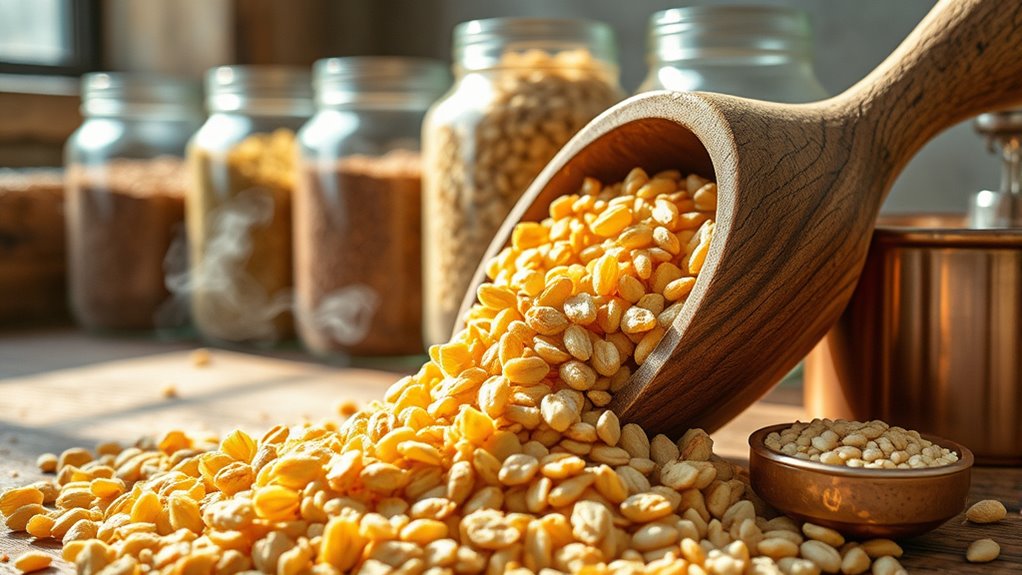
Specialty malts play an essential role in enhancing the flavor profile of your IPA, allowing you to achieve a unique and balanced brew.
Here are three helpful hints for using specialty malts effectively:
- Crystal Malt: Use 5-10% Crystal malt for a balanced malt backbone that adds sweetness and complexity without overpowering hops.
- Dextrin Malt: Incorporate Dextrin malt to enhance body and mouthfeel, providing unfermentable sugars for a thicker texture.
- Munich Malts: Add Munich or Vienna malts for subtle caramel and bready flavors, enriching your IPA’s complexity while maintaining hop focus.
Experiment with these specialty malts to innovate your brewing process. Additionally, understanding yeast and fermentation techniques is crucial for achieving the desired flavor profile in your brews.
Achieving the Ideal Hazy IPA Profile
Creating the ideal Hazy IPA profile involves a careful selection of malts and adjuncts that not only enhance flavor but also contribute to the signature hazy appearance.
Start with a grain bill of at least 65% pale malts to create a clean backbone. Incorporate Pilsner malt for a bready mouthfeel without overshadowing the hops.
Add 30% flaked adjuncts, like wheat and oats, to achieve that characteristic haziness and soft texture. Finally, consider 5% dextrin malt for unfermentable sugars, enhancing sweetness and thickness.
Aim for a final gravity between 1.015 and 1.020 for balance, richness, and juiciness in your Hazy IPA. Additionally, using a high-quality mash tun can significantly improve your efficiency and consistency in brewing.
The Importance of Malt Selection in Beer Styles
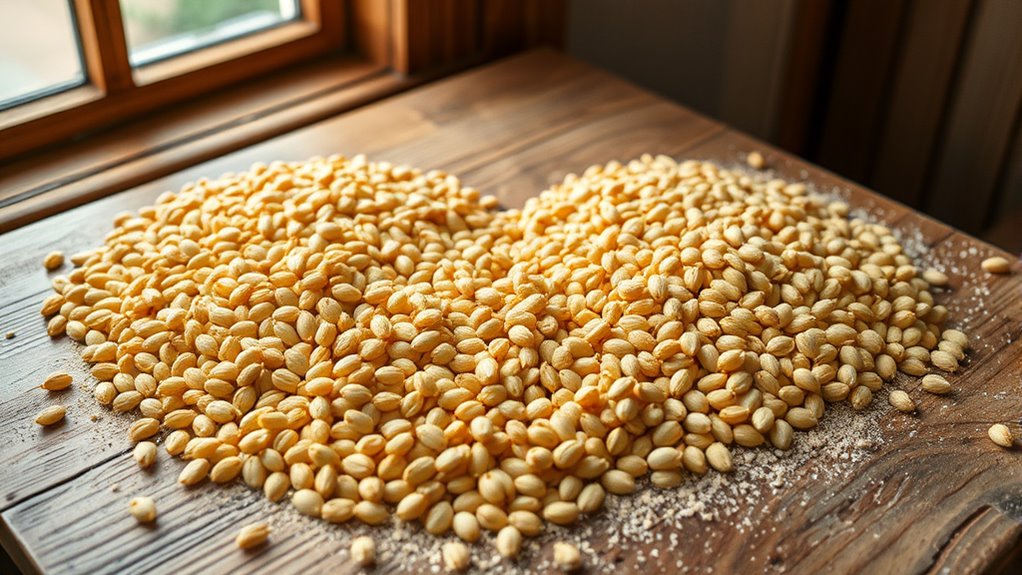
Malt selection plays an essential role in shaping the overall character and quality of beer styles, especially in IPAs. The base malts you choose influence flavor, mouthfeel, and overall complexity.
Here are three key considerations:
Three vital aspects to consider: fermentables, flavor impact, and terroir shape the essence of your beer.
- Fermentables: Base malts typically provide over 80% of fermentables, critical for alcohol content and body.
- Flavor Impact: Different base malts, like Pilsner or Maris Otter, impart distinct flavors and aromas.
- Terroir: Selecting regionally grown malts enhances the beer’s unique characteristics, reflecting the local environment.
Understanding these factors helps you create innovative IPA experiences that resonate with craft beer enthusiasts.
Balancing Malt and Hop Characteristics
Achieving a harmonious balance between malt and hop characteristics is key to crafting a successful IPA. Start with a solid base malt, like Rahr 2-Row or Maris Otter, which provides fermentable sugars and a clean taste. This allows your hop profile to shine without overwhelming it.
Consider incorporating specialty malts, up to 10%, to enhance the malt backbone, ensuring a balanced flavor. Dextrin malt can also improve mouthfeel by adding sweetness without increasing bitterness. Additionally, buying bulk base malts can significantly reduce your costs, making it easier to experiment with different recipes.
Aim for a final gravity between 1.015 and 1.020 to achieve that well-rounded beer where malt and hops work together seamlessly.
Helpful Hints:
- Choose a versatile base malt.
- Limit specialty malts to 10%.
- Use dextrin malt for body.
Regional Preferences for Base Malts
When reflecting on the selection of base malts for your IPA, understanding regional preferences can greatly enhance your brewing experience.
Different areas tend to favor specific malts, impacting flavor and authenticity. Here are three key points to reflect upon:
Regional malt preferences significantly influence the flavor and authenticity of your brews.
- American Ales: Rahr 2-Row is popular for its mildness and cost-effectiveness.
- British Styles: Maris Otter and Golden Promise add depth and richness to IPAs.
- Pacific Northwest: Pale malts are chosen to elevate hop character.
Embracing these regional preferences allows for innovative brewing, enabling you to create unique IPAs that resonate with local tastes.
Crafting the Perfect Grain Bill for IPAs
Crafting a well-balanced grain bill is essential for producing a successful IPA, as it directly influences the beer’s flavor and mouthfeel. Start with 65-70% pale malt, like Rahr 2-Row, for a clean malt backbone.
Consider adding 20-30% Pilsner malt for a lighter profile. To enhance sweetness, include 5-10% crystal malt, providing a hint of caramel without overshadowing the hops. Dextrin malt, around 5%, improves mouthfeel by adding unfermentable sugars.
Finally, remember to align your choice of malts with your desired flavor profile, as regional barley characteristics can greatly impact the final product’s taste. Additionally, incorporating citrus-forward IPAs can enhance the overall drinking experience by complementing the malt backbone with vibrant hop flavors.
Helpful Hints:
- Experiment with different malt ratios.
- Take notes on flavor profiles.
- Adjust based on personal preferences.
Tips for Experimenting With Base Malts
Experimenting with base malts can greatly enhance your IPA brewing experience.
To achieve peak flavor complexity in your American IPAs, consider these tips:
- Start with a solid base malt: Rahr 2-Row or Maris Otter are excellent choices for their distinct profiles.
- Adjust your proportions: Combine 65% pale malt with 30% adjuncts like oats, and 5% dextrin malt to modify sweetness and body.
- Incorporate specialty malts: Use small amounts of Crystal or Victory malts to add depth without overshadowing hops.
Keep notes on your experiments to refine your process and discover the ideal combinations for your preferred IPA style. Additionally, starting with essential equipment ensures that you have a practical foundation for brewing without overwhelming complexity.
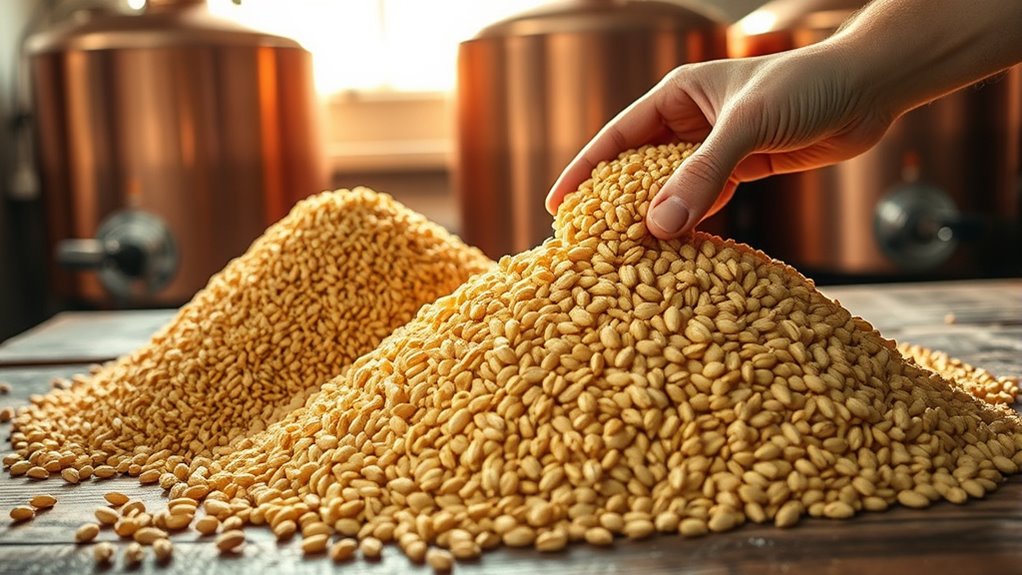
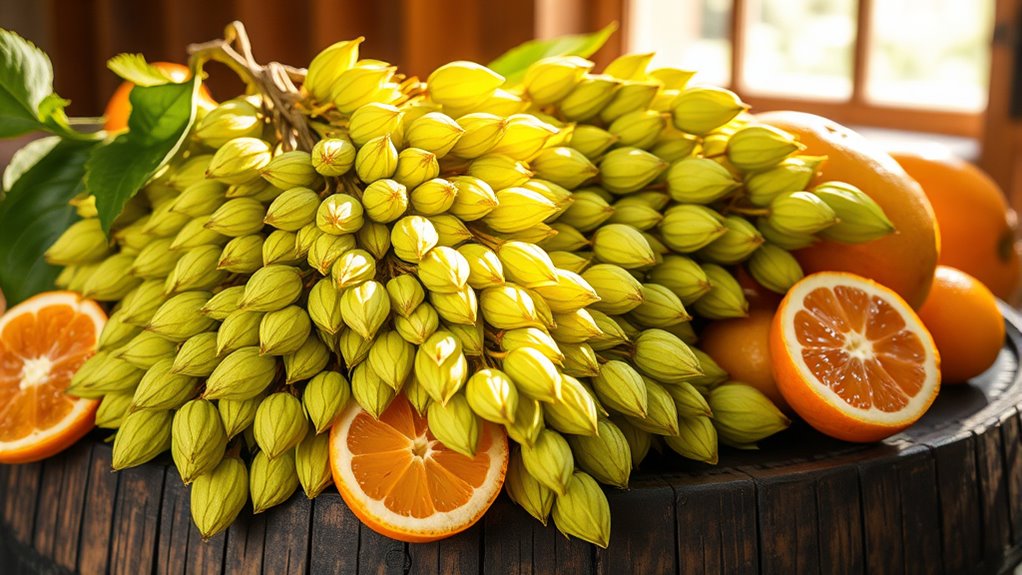
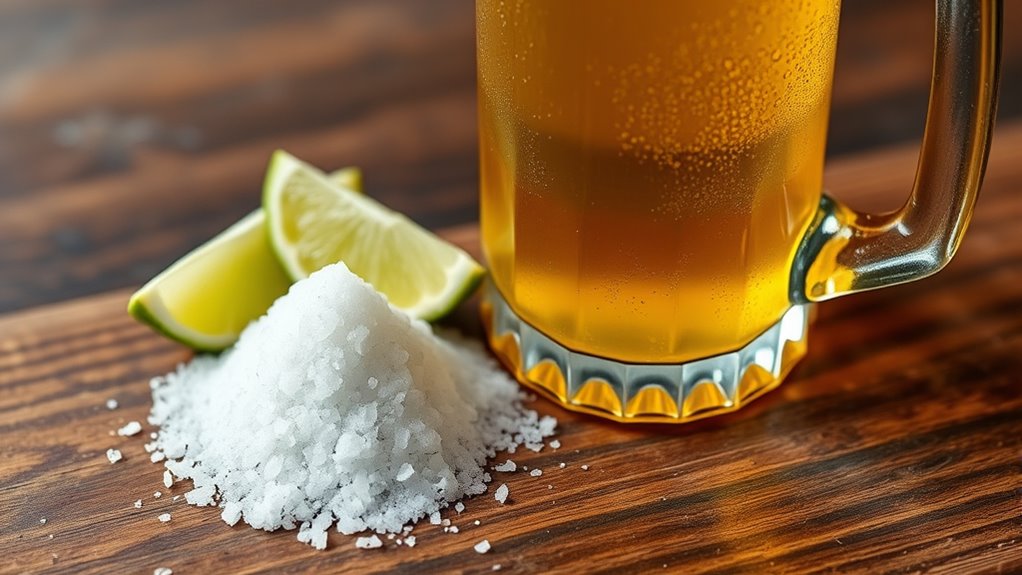
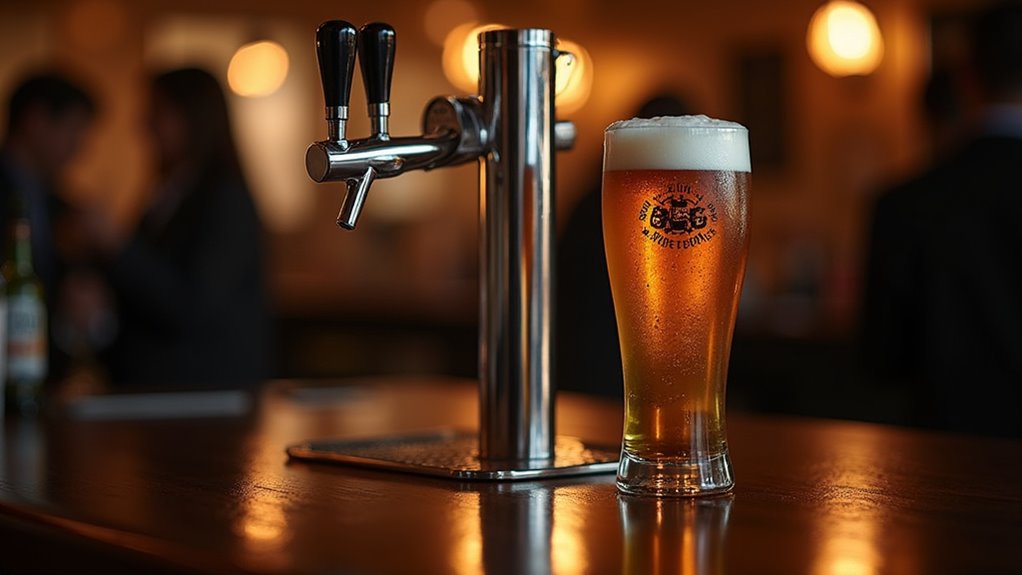
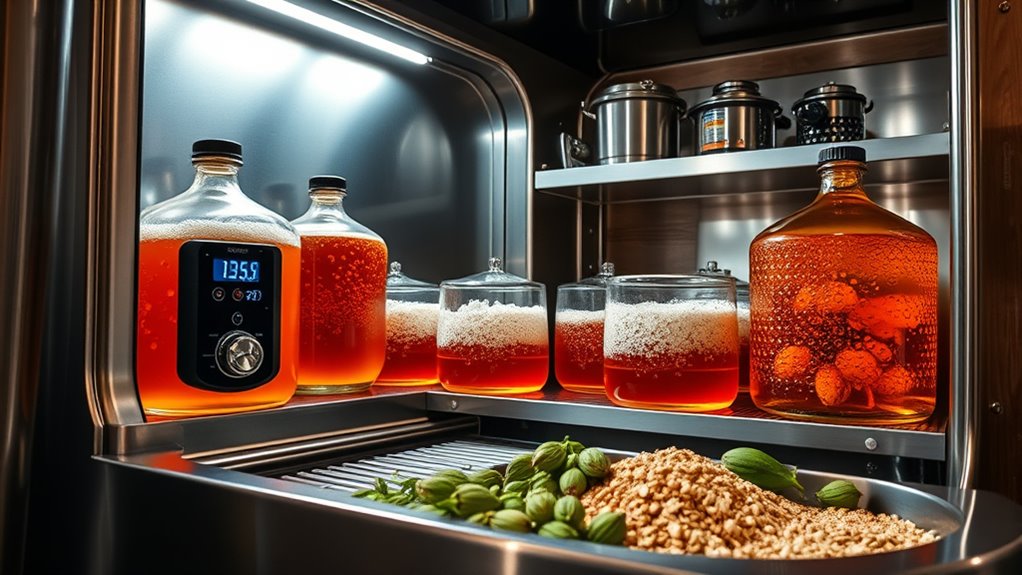
5 comments
Comments are closed.